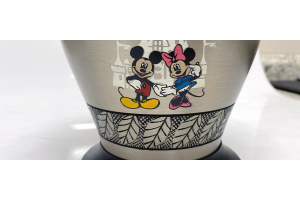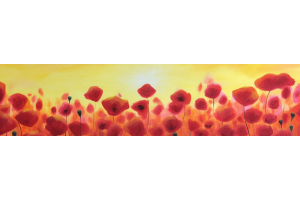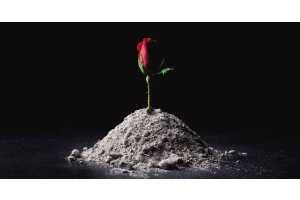
There are millions of people in the world who struggle with low vision every day. For many, learning how to read in braille, and requesting reading materials in braille, makes a significant difference in their ability to communicate with the world around them. However a person comes to have low vision, braille is a language they can use to assist them. Why do we offer braille urns? By offering urns with custom printing in braille, In The Light Urns supports greater accessibility for people with diminished sight.
What Is Braille?
Braille is a language composed of raised bumps set in a pattern to represent a letter, punctuation mark, number or word. Each one is known as a “braille cell.” Each cell has the potential to have six raised bumps, two columns with three rows. The number and position of the dots tell the reader what the character is supposed to represent. There are two types of braille, known as uncontracted braille and contracted braille. Uncontracted braille uses one cell for every letter, number or punctuation mark. It is more useful for children or adults who are just learning to read in braille. Contracted braille uses the same arrangement of a braille cell to represent whole words, which takes up less space and conveys a message more quickly.
A Brief History of Braille
Prior to the invention of braille, people with low vision had few options for learning how to read. Reading raised print, the standard in the early 19th Century, was hard to master and even more difficult to make. This limited the number of books available for people who could not use their eyes to make out the words. Louis Braille, growing up in this circumstance, wanted something more. Based on a method of sending military messages that could be read without light, he devised a system of braille that we see still in use today.
Who Might Need Braille Urns?
Although braille is a language that is designed to provide literacy to people whose vision is low enough that they cannot see or discern standard printed language, not everyone with low vision knows how to read braille. Many people rely on a number of systems that allow them to understand and communicate written language, such as magnification or voice-to-text software, but there are times when there is no substitute for braille. Anyone can learn to read braille, and it is a useful language to help out those who may struggle to read print that is too small. Adding a transcription in braille to our cremation urns allows those who know braille, or who are just learning it, to identify the engraving on the outside of the urn.
Custom Cremation Urns
The National Federation of the Blind notes that there are over 7 million adults living with a visual disability in the United States. With certain accommodations, these people can live their lives much like those with average vision. Offering braille transcriptions to go with our engraving services is a way that we can achieve our goal of greater inclusivity with all of our urns. We have a growing number of custom cremation urns that feature braille as an option. In fact, we may be able to put braille on virtually any of our extensive line of urns and keepsakes.
Creating braille urns is a simple act that could make such a difference for a person with low vision who just wants to read the printing on the side. The ability to read a message left for a loved one helps to link families together forever.





